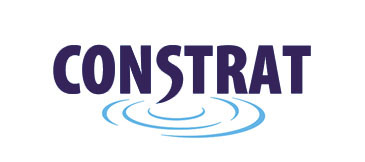REPLACEMENT OF THE WATER NETWORK IN THE CITY OF XYLOKASTRO (Peloponnese) (SECTION 4) – TELE-CONTROL & REMOTE CONTROL OF THE CENTRAL WATER NETWORK

Contracting authority: DEYA (WATER NETWORK COMPANY OF XYLOKASTRO)
Funding authority: NSRF 2007-2013 & OWN RESOURCES

Contracting authority: DEYA (WATER NETWORK COMPANY OF XYLOKASTRO)
Funding authority: NSRF 2007-2013 & OWN RESOURCES
DESCRIPTION
This system achieves the tele-control, remote control and leakage detection of the central water supply network in the Municipality of Xylokastro.
- Twelve (12) Local Control Stations (LCS) of the Central Network were placed at key points of the water supply network, collecting information such as water supplies, pressures, etc., and transferring them via a GSM wireless network, to the Central Control Station for further processing. Depending on the supply demand, they can change the pressure of the water network which is being monitored and same time reducing network leaks, as well as high-pressure (pipe breaks, etc.), thereby increasing the service life of the network and save water.
- One (1) Central Control Station (CCS) where operators can access control of all or part of the system’s functions. Information on the operating status and operating faults of the installation, is made by tele-control / remote control software (SCADA).
IN BRIEF DESCRIPTION OF OPERATION
- Water Sources – Drillings – Water Tanks
Water tanks level is constantly being monitored of the water inflow sources as well as of the drillings. If the consumption needs are covered by the supplies of the water sources, then the system is instructed to stop the drilling operation. In case the consumption needs are not covered by the supply of the water sources, appropriate messages are issued to the operator and the pump operation is automatically activated in the drilling. The system continuously monitors the readings from the flowmeters and when they exceed the permissible limits, appropriate messages are issued to the operator.
- Water Supply Pumping Station – Water Tanks
The water level of the inlet tank is constantly being monitored, the water outlet at the pumping station and also the water level of the tank, in which, pumping station is being feed up. When the water level into the tank reaches the lower limit, pump startup is given. It is chosen to initiate the pump with the fewer hours of operation among the others, and the second with the fewer hours of operation among the others, and so on. This ensures that the pump operation is equally distributed. If the lower level limits are exceeded in the inlet tank, appropriate risk messages are issued to the operator and the necessary functions such as shutdown of the pumps are automatically performed.
- Finally, all the above information is collected at the Central Control Station (CCS) where operators follow the appropriate steps in order to achieve maximum system performance.
The following equipment has been installed to operate the tele-control/remote control system:
- One (1) Central Control Station (CCS) with the following sub equipment:
- One (1) communication processor
- One (1) PC
- One (1) screen
- One (1) laptop computer
- One (1) UPS
- Two (2) software for PCs
- One (1) Telecontrol / Remote Control software (SCADA)
- One (1) software package for local and remote TSE programming.
- Twelve (12) Local Control Stations (LCS) in drills and water tanks with the following equipment:
- Twelve (12) TSE programming software
- Eighteen (18) tachymetric flow meters
- Seven (7) analogue pressure sensors
- Seven (7) analogue level sensors
- Thirteen (13) level switches
- Thirteen (13) frequency inverter
- Twelve (12) pillar-installed electrical equipment
Advantages of the system during the operation:
- Early detection of the origin of potable water losses, and immediate treatment of leaks and overflows, resulting in the reduction of annual losses and total consumption of the water supply network of the Municipality
- Power consumption reduction of the pumping station operation, as well as their protection from voltage errors, lack of water etc
- Continuously recording (inlet/outlet of water tanks and the water network) which inform for serious leaks
- immediate notification and handling of the appropriate techniques for faults (24-hour monitoring) such as pump failure (lack of water through the network), sudden drop in pressure (leakage), sudden increase in flow (pipe breakage)





